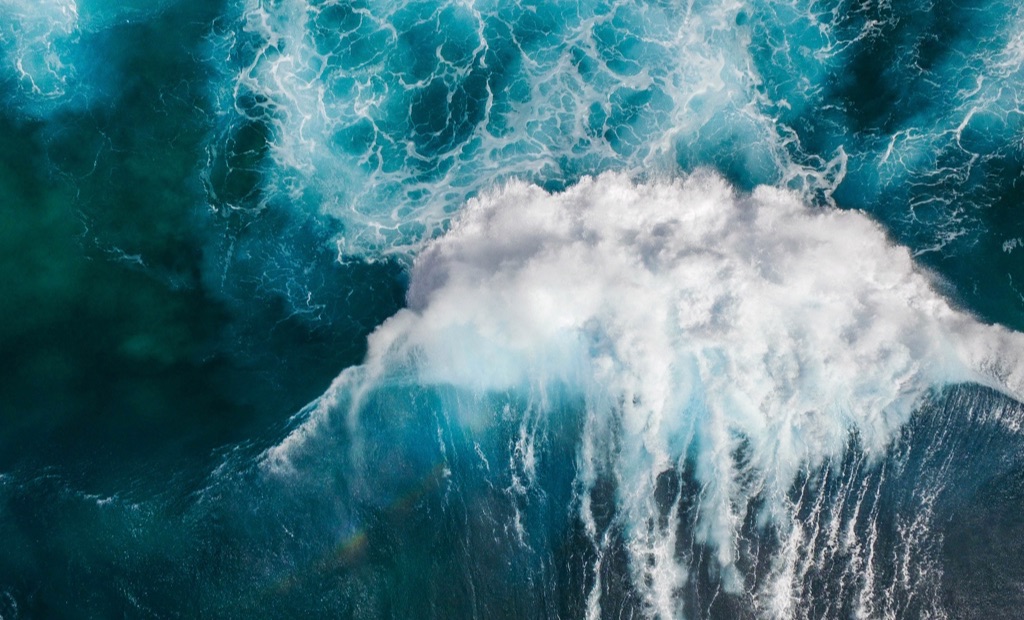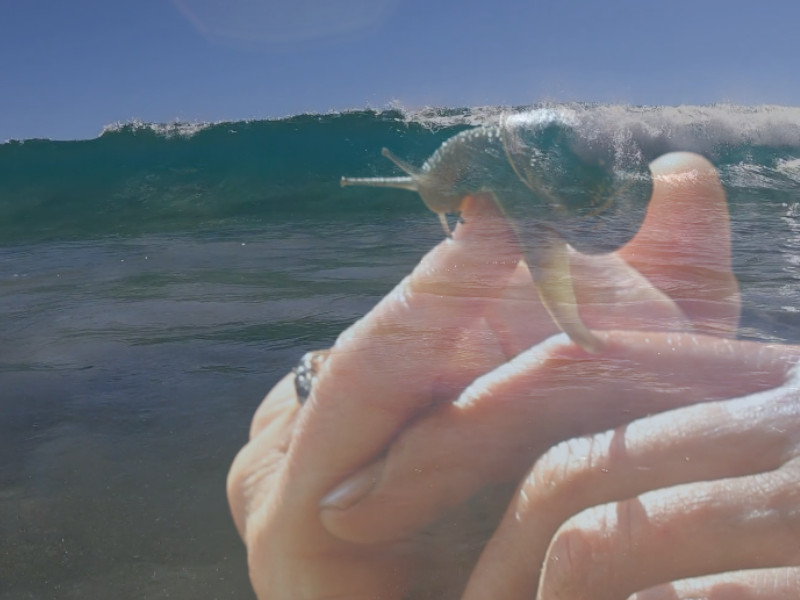The interconnectedness of all things
Alexander von Humboldt (1769 – 1859), often called the father of ecology, knew that all of nature is interconnected, and studied the relationship between organisms and their environment. He recognised that humans are an inseparable aspect of nature, and an integral part of multiple ecosystems. Therefore, anything we do that affects one part of the natural world affects other parts, because everything is connected. Humboldt was describing the relationship of mutual interaction and sympathy, which is so pertinent to our contemporary understanding of how everything – from microscopic life to forests to plants to the oceans to the cosmos – is inextricably linked.

Nature expresses itself through delicacy and strength. Through the fragile grace of a snail, to the awesome power of a breaking wave; something of the rhythms and relationships of all things in the world, and in the universe, is revealed. Waves transmit energy across the ocean and have the potential to travel across an entire ocean basin if unobstructed. High and low tides are caused by the gravitational pull that the moon exerts on the earth. Snails that live on the beach migrate upward during high tide and downward during low tide. Snails actually move in ‘waves’. This is how they propel themselves forward: “waves of muscle contraction and relaxation travel along the central portion of the foot from tail to head.” Everything is connected.
Recently, evidence of shell structure named the Gaia Snail, has been discovered through the ESA’s star mapping missions, Gaia. The structure – a pattern of the combination of position and velocity – reveals that “our Milky Way galaxy is still enduring the effects of a near collision that sets millions of stars moving like ripples on a pond.” Even galaxies are not islands; they are connected to us in ways that we don’t yet fully understand.
Over the last hundred years in particular, we have experienced the negative effects that industrial activity has had on the natural world. In 1962, biologist Rachel Carson explained in her book Silent Spring, how toxicity and the use of pesticides were linked. About how the prolific use of DDT – and other synthetic chemicals – had disrupted the balance of ecosystems.
Everything we do has an effect. In his 2020 film, A Life On Our Planet, David Attenborough says that the solution to our problems lie in rewilding. ‘We must rewild the world. Rewilding the world is easier than you think. A century from now our planet could be a wild place again.
‘We have to do what nature has always done. It worked out the secret of life long ago.
‘A species can only survive when everything around is surviving.’
This comes at a time when the conversation has turned to rewilding ourselves. In his book, Rewild Yourself, Simon Barnes talks about how we are forgetting the natural world; how we have utterly lost this connection. To be happy and whole, we must realise, and act upon, our interconnectedness with the nature; with ‘the wild’. It is not necessarily the natural world that needs rewilding, Barnes suggests; it is us.
Words and video edit by Lynsey Allett
Image credit: Michael Olsen on Unsplash
Related Links
- Alexander von Humboldt and the Interconnectedness of Nature
- Snail Habitat and Distribution
- Small galaxy caused ‘snail shell’ structure in our part of the Milky Way
- Gaia hints at our Galaxy’s turbulent life
- Our Planet review – Attenborough’s first act as an eco-warrior
- Rewild Yourself by Simon Barnes review – how to get closer to nature

